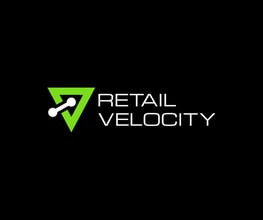
The Ripple Effect of Poor Retail Data Insights on CPG Companies
The importance of accurate and reliable retail data insights to the sustained growth of a consumer packaged goods (CPG) company and its retailer partners cannot be overstated. These insights, when based on the most timely and granular data, serve as the backbone for crucial business decisions for key business functions such as demand forecasting, sales and product orders, product production, and the entire supply chain.
When these insights are compromised, a series of domino effects ensue, creating a ripple that can significantly impact the overall health of a CPG business.
Let’s examine the havoc poor retail data insights can wreak on consumer brands and how they can reduce and prevent it.
1. Demand Forecasting: The Foundation of Strategic Planning
Mastering the art and science of demand forecasting is pivotal for CPGs to effectively navigate the delicate balance between out-of-stock and overstock issues. This strategic exercise relies heavily on accurate, near real-time retail data insights. Poor retail data insights may lead to inaccurate predictions of consumer demand. This can result in overestimating or underestimating the demand for products.
Underestimating consumer demand can result in stockouts. This not only leads to missed sales and revenue opportunities but can also damage a company's reputation if customers are unable to find products when needed and become dissatisfied with the brand. On the flip side, overproduction, overstocking, and excess inventory situations tie up capital and warehouse space, increase storage costs, and impact profitability and operational efficiency—and may result in the need for product discounts or write-offs to clear unsold stock or lead to significant financial losses if products become obsolete. Either way, inaccurate demand forecasting can have profound negative effects to a CPG's bottom line. CPG companies must recognize that demand forecasting is not just about predicting future sales; it's about aligning production and supply chain efforts with the dynamic needs of the market.
2. Sales, Marketing, and Product Orders: Orchestrating the Retail Symphony
Inefficient inventory management is the Achilles’ heel of many CPG companies grappling with poor retail data insights. The inability to accurately gauge and optimize stock levels can lead to suboptimal sales and product order decisions. Unfulfilled orders, stemming from inaccurate data, trigger a chain reaction of issues affecting customer satisfaction and loyalty.
Consider the repercussions of delayed or incomplete order fulfillment, especially when it comes to new product launches. Customers may turn to competitors, eroding the hard-earned trust in the brand. In the age of instant gratification, a seamless customer experience is paramount. CPG companies must ensure they develop accurate sales forecasts and that their sales and product order processes are finely tuned to the rhythm of accurate retail data insights to avoid discord in the retail symphony.
Data insights are crucial for designing and implementing targeted and effective marketing and promotional strategies. Poor data quality can result in misinformed marketing decisions, leading to incorrect market positioning, the inability to respond quickly to changes in market conditions, and inefficient marketing campaigns that don't resonate with the target audience. Also, overestimating consumer or market demand may lead to excessive marketing efforts and trade spending, while underestimating demand may result in missed opportunities for effective trade promotions.
With unreliable data and insights, sales and marketing teams might invest resources in areas that do not align with actual market trends or customer preferences. This includes spending on unnecessary promotions, product lines, or expansion into markets that may not be profitable.
3. Product Production: THE Balancing Act of Supply and Demand
The production phase in CPG is a delicate balancing act between supply and demand. Flawed or incomplete retail data and substandard retail data insights can upset this equilibrium, leading to overproduction or underproduction of goods.
Overproduction, a result of imprecise demand forecasts and overestimating consumer demand, can lead to increased production and operational costs, as the company invests in resources to produce more goods. Overestimating demand can lead to excess inventory, which may eventually become obsolete or perishable, resulting in increased waste.
Conversely, underproduction means missed sales opportunities and potential damage to the brand's reputation. Picture a scenario where a popular product is in high demand, but the shelves remain bare due to inadequate production. This not only results in immediate revenue loss but also leaves a lasting negative impression on customers—and quite possibly, your retailer partners. Underestimating demand may also result in underutilized resources, impacting efficiency and increasing per-unit production costs, and it may result in the need for rushed production, leading to higher chances of defective or low-quality products.
CPG companies must strive for a production sweet spot, aligning with accurate retail data insights to meet market demands efficiently. Without data-driven demand forecasts, production planners will find it challenging to schedule and allocate resources effectively. This can result in inefficient production processes, delays, and increased costs.
4. Supply Chain: Navigating the Web of Interconnected Processes
A robust supply chain is the lifeline of any CPG company. However, poor retail data insights can introduce disruptions into this intricate web of interconnected processes. Suppliers grapple with challenges in meeting fluctuating demand or sudden changes in order volumes, leading to inefficiencies and delays that can ripple through the entire supply chain and that can potentially strain relationships with retailers.
Increased lead times, a direct consequence of inaccurate demand forecasts, have far-reaching effects. From sourcing raw materials or components to delivering finished products, longer lead times impact the procurement process, operational agility, and responsiveness. A lack of agility in adjusting supply chain strategies can result in increased vulnerabilities to market fluctuations. CPG companies must recognize the interconnected nature of the supply chain and invest in technologies that enhance supply chain visibility, retailer-supplier collaboration, and adaptability throughout the supply chain to ensure resilience in the face of changing consumer behaviors and dynamic market conditions.
5. Financial Impact: Balancing the Books in a Turbulent Landscape
The financial implications of poor retail data insights can be considerable. Revenue loss is a direct consequence of missed sales opportunities or excess inventory holding costs associated with overproduction and wastage. Poor data insights may also lead to increased operational costs, including expedited shipping costs to address stockouts and potential costs associated with changing production schedules and inefficient production processes. The delicate balance between income and expenses can tip unfavorably when demand forecasting is amiss.
Consider the cumulative effect of revenue loss and increased operational costs. The financial health of a CPG company is directly linked to its ability to navigate the turbulent landscape of consumer demands. Strategic financial planning, informed by accurate retail data insights, is paramount to ensure sustainable, profitable growth and resilience in the face of economic uncertainties.
When working capital is strained and cash flow management is ineffective, it limits a company’s ability to invest or reinvest in other areas of the business. For example, if a company doesn’t have accurate insights into how promotions or stores perform or how much lift they gain from certain promotions or marketing campaigns, then they can’t properly eliminate inefficient trade spending and reinvest those savings in profitable, high-performing promotions, marketing initiatives, and stores. Furthermore, the lack of reliable insights can lead to suboptimal pricing strategies that result in lost sales and revenue.
6. Brand Reputation: A Fragile Ecosystem of Trust
In the digital age, where information travels at the speed of light, brand reputation is a fragile ecosystem. Poor retail data insights can lead to even poorer business decisions that directly impact customer satisfaction and brand loyalty, leading to dissatisfaction, negative reviews and word of mouth, lost trust, and a tarnished brand image.
Imagine a scenario where customers consistently face stockouts, delayed orders, or inconsistent product availability. The erosion of trust may be gradual, but it is potent. Once customer trust is compromised, winning it back becomes a herculean task. CPG companies must recognize the symbiotic relationship between accurate retail data insights and brand reputation, ensuring that every decision contributes positively to the customer experience.
How You Can Smooth Out the Ripples with Precision and Insight
Poor retail data insights—and the lack of timely insights—can have a cascading impact on numerous aspects of a consumer goods business and its retailer partners, affecting everything from inventory management and trade promotion effectiveness to customer satisfaction and overall competitiveness in the market. It underscores the importance of investing in and leveraging robust, advanced retail data collection and analytics solutions such as VELOCITY® to ensure you’re making critical business decisions based on the most precise, granular data.
In the intricate world of CPG companies, where products move from production lines to retail shelves with clockwork precision, the role of trustworthy retail data insights cannot be overstated. It is the compass guiding strategic decisions, the lighthouse preventing the shipwreck of inefficiencies. Recognizing the ripple effects or domino effects of poor retail data insights is the first step toward building resilience and agility in an ever-evolving market.
The next step is effectively navigating these complexities with precision and insight. For nearly 30 years, Retail Velocity has done just that—helping CPG companies smooth out the ripples caused by less-than-optimal business insights and helping position CPGs not just as manufacturers of goods but as architects of seamless customer experiences. As the industry continues to evolve, those who master the dance between data and operations will emerge as leaders, orchestrating success in the competitive landscape of consumer packaged goods.
If you're ready for a new data dance instructor and partner, we're ready to hit the floor with you. Tell us how we can help you.



